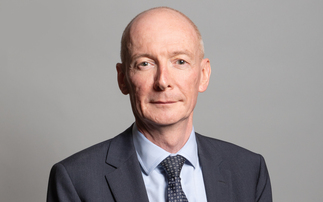
A deficit of over £50bn in the public finances could force chancellor Rachel Reeves to further reform the tax treatment of pensions
A deficit of over £50bn in the public finances could force chancellor Rachel Reeves to further reform the tax treatment of pensions, Evelyn Partners says.
The wealth management firm said Budget speculation has intensified over summer following a "bruising" forecast from the National Institute of Economic and Social Research (NIESR) that Reeves could face a deficit in the public finances as great as £51bn.
It said the debate over what tax rises we could see in the autumn, if spending is not to be drastically cut, is now truly underway – but noted that simply tinkering with inheritance tax (IHT) reliefs is "unlikely to make much of a dent" in the short term.
Evelyn Partners senior financial planning partner and retirement specialist Gary Smith said: "If the NIESR's estimate is in the right ballpark then the chancellor will need to look at some big levers like extending the freeze on personal tax thresholds and maybe defrosting fuel duty… However, flying slightly under the radar at the moment is a potentially lucrative area for Treasury reform: the tax treatment of pensions."
Smith said that suspicions last summer that the chancellor was set at the 2024 Budget to cut the maximum tax-free pension cash down from the current £268,275 sparked a "rush of enquiries from concerned clients" – noting his firm's financial planners were experiencing something similar this summer.
He said: "Before the last Budget a significant number of savers above 55 years of age decided to take their tax-free lump sum. Some of those who had done so without a clear need or purpose for it scrambled in the days after the Budget to reverse their decision, with mixed results.
"In an echo of many recent Budgets, pension tax relief could come under the spotlight yet again, with recent HM Revenue & Customs (HMRC) figures showing very substantial amounts of income tax and National Insurance "sacrificed" by the Treasury as it allows savers effectively to keep their gross income if they put it into a pension."
Smith added: "We can expect a rerun of last summer's uncertainty, unless the Treasury rules out such moves. That it hasn't, again – despite calls from stakeholders in the financial services sector to do so – can only leave people to suspect that pensions are on the table for the Budget."
Smith said there were three potential Budget moves around pensions – measures around the tax-free lump sum; pensions tax relief and salary sacrifice.
Tax-free lump sum
Smith said the 25% tax-free cash had been the "most treasured benefit of pensions for a long time", and even more so since pension freedoms allowed it to be taken as a lump sum while leaving the rest of the pension pot invested. He said it was "a bonus that keeps many people saving into their pensions".
He said a reduction in tax-free cash would put a "big dent" in pension freedoms and to many savers in the accumulation phase or nearing retirement it would "feel like the goalposts have been moved as they're halfway down the pitch".
Smith noted it seemed more likely that the cap would be reduced than the percentage, and £100,000 was rumoured before the last Budget, after it was floated by the Institute for Fiscal Studies (IFS) as a move that could save around £2bn a year over the long-term.
Evelyn Partners said the current maximum of £268,275 meant that those who amass a pot of £1,073,100 (the old lifetime allowance (LTA)) would be getting less tax benefit from making further pension saving – adding that a reduction to £100,000 would bring that threshold down to just £400,000 and might discourage some individuals from saving more than that, weakening private saving.
But he said there were three important aspects of this issue to keep in mind.
- Firstly, that tax-free cash has been capped in the past when the LTA was introduced and then reduced in subsequent years. Smith said each time there were transitional arrangements put into place in the form of protected tax-free lump sums that savers could apply for at existing levels – adding that any move to further limit the pension commencement lump sum (PCLS) could be accompanied by transitional arrangements in order to lessen the impact for those close to retirement.
- Second is the complicating factor of the inheritance tax rule change arriving in April 2027. Smith said the change is driving retirees to think about drawing down on their pensions, and their tax-free cash, more rapidly, to gift or spend, or in some cases reinvest in offshore bonds. He said this was especially the case where savers will be older than 75 by April 2027, in which case the unspent pension assets could also be subject to income tax as the beneficiary draws on them.
- Third, Smith said restricting the PCLS would not bring in extra revenue for the government swiftly, it would be a long-term gain, so that could make this a less attractive move for Rachel Reeves, given how unpopular it would be.
Higher and additional rate pension tax relief
Smith also noted that HMRC had just revealed that gross pension income tax and national insurance pension reliefs in the 2023/24 tax year is estimated to be £78.2bn, up from £72.1bn in 2022/23.
Of that, it said £54.2bn was income tax relief, a jump compared to £47.8bn in the previous year. Of the £54.2bn, 68% consisted of higher or additional rate tax relief.
Smith said: "With the Autumn Budget on the horizon and the public finances in a parlous state, you can't help thinking that this data was noticed in the Treasury – particularly as, with the lion's share of tax relief going to higher and additional rate taxpayers, there might be an equity argument for reform. Tax relief at the two higher rates could just be cancelled, leaving a flat rate of 20% relief for everyone."
Evelyn Partners noted the IFS has said that limiting up-front relief to the basic rate of income tax would be a £15bn a year tax rise, the vast majority of which would come from those who are in the top fifth of earners when making pension contributions.
Smith said: "While this step would provide the greatest saving for the Treasury, and would be the cheapest to administrate, it would cause uproar among higher paid public sector employees – unless there was a controversial carve-out for the public sector – and do nothing to encourage pension saving among basic rate taxpayers. Indeed, the likelihood is that it would damage pension saving overall."
He speculated that if the chancellor were to target pension tax relief, then a flat rate at a probable 30% – which could be sold as handing a bonus to basic-rate taxpayers in order to encourage saving – was favourite. However, Smith said was still fraught with difficulties.
He explained: "It would be relatively easy to implement in private sector relief-at-source pension systems where higher and additional rate taxpayers currently have to claim back their extra tax relief, as the basic rate of relief could be set at 30%. But increasingly popular salary sacrifice schemes would probably have to be stopped altogether as through these higher or additional rate taxpayers receive their 40% or 45% tax relief automatically by reducing their salary.
"However, the big issue is the net pay arrangements which exist in the public sector, as the upshot here is that, without a massive restructuring of the system, higher and additional rate taxpayers would essentially have to suffer a tax charge to claw back their higher and additional rate relief. The value of employer contribution that should be assigned to each individual employee is not straightforward to measure."
Salary sacrifice
Smith said that salary sacrifice is another area the government might look at.
He explained that, under this system, the employee's salary is reduced by a certain amount, which is paid as an employer contribution into their pension. It can be advantageous in that relief is gained automatically against all income tax at all rates, as well as against national insurance.
Furthermore, he said that, because the employer doesn't pay NI on the salary sacrificed, they will usually pass on some or all of this saving by contributing an extra amount into the employee's pension.
Smith said: "As noted, banishing the higher rates of pension tax relief or creating a flat rate at 30% would probably spell the end for salary sacrifice pension arrangements. However, some HMRC-commissioned research published in May this year suggested that salary sacrifice across the board could well be in the Treasury's spotlight, whether pension tax relief is reformed or not."
Annual allowance
Smith commented that, with the difficulties around reforming the rates of pension tax relief in mind, it was not unthinkable that the chancellor's gaze rests once more on the annual allowance, as this was a "relatively straightforward" way to control the amount the Treasury sacrifices in tax revenue via pension reliefs.
But he noted that, in the 2023 Spring Budget, amid complaints from NHS executives that doctors, consultants and other senior staff were retiring early or cutting hours due to the tax penalties associated with extra pension payments, the Conservative chancellor Jeremy Hunt rather unexpectedly removed the LTA and increased the annual allowance from £40,000 to £60,000.
Smith said: "It seems unlikely that the LTA will be resurrected, but if the chancellor can figure out a way of keep well-paid NHS practitioners happy, then a cut to the annual allowance is a possibility.
"It could be taken back below the £40,000 level where it stood before April 2023, and still not hit the vast majority of people who pay nowhere these amounts into their pension each year. Even someone who is paying a gross £1,000 into their salary every month is still using only £12,000 of their £60,000 allowance."








